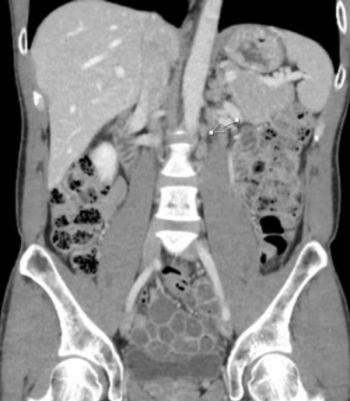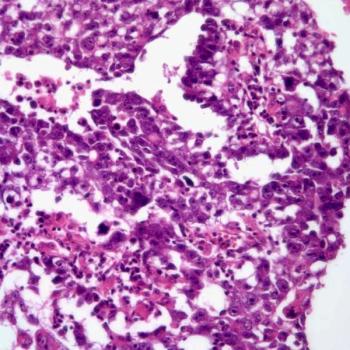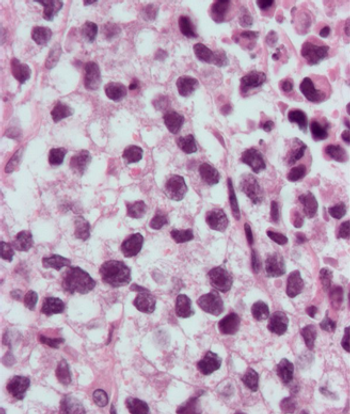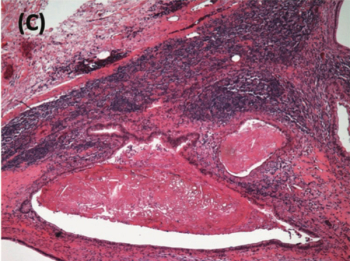
Oncology NEWS International
- Oncology NEWS International Vol 5 No 9
- Volume 5
- Issue 9
Knowing When to Bow Out Gracefully
Here is a true story, one that you won't see on ER or Chicago Hope--A 64-year-old man is referred to me with cancer that started somewhere in his intestines and is now replacing liver and lung. He is bed-bound, losing weight quickly, and has no appetite. He has been treated with two types of chemotherapy, both of which have made him sick, yet the cancer has continued to grow.
Here is a true story, one that you won't see on ER or ChicagoHope--A 64-year-old man is referred to me with cancer that startedsomewhere in his intestines and is now replacing liver and lung.He is bed-bound, losing weight quickly, and has no appetite. Hehas been treated with two types of chemotherapy, both of whichhave made him sick, yet the cancer has continued to grow.
He and his family want to continue active treatment, but I haveno chemotherapy that has any chance of shrinking the cancer orimproving his health state. The patient and family refuse to talkabout "do not resuscitate" orders.
He says that his previous doctors told him his chemotherapy "hada good chance of working," and he wants to continue therapythat he believes gives him a chance of cure or long-term survival.
The doctors at the other cancer center never told the patientthat he had less than 6 months to live, and that survival forhis cancer had not improved for the past 20 years. They nevermentioned that the chemotherapy had no chance of cure, and hadnever been proven to make people live longer or better despite20 years' worth of trying. "We didn't bring it up, becausehe didn't, and he seemed to want a hopeful approach," theytold me.
When Do You Quit?
Oncologists often fail to communicate to their patients what cancertreatments can and cannot do, and to explain to them when it istime to quit aggressive chemotherapy. That lack of communicationis the focus of this article.
A separate article addressed to patients appears on page 4, andI would encourage you to make copies of that article for yourpatients, to help them understand what they need to know abouttheir cancer and what questions they need to ask about their treatment.
I consider the extra time taken at the beginning of treatmentto thoroughly discuss options and expectations a valuable investmentin patient care.
The Sobering Facts
Our patients are generally aware that remarkable progress hasbeen made in the treatment of cancer over the last decade, butthey may not realize that this progress has generally been seenin only a few malignancies. We can cure 90% of patients with testicularcancer and 50% of patients with lymphoma. But the 3,500 curabletesticular patients are dwarfed by the 170,000 lung cancer patientsof whom 157,000 will die within a year or two.
The sad and sobering fact is that survival rates for lung, prostate,colorectal, and breast cancers have improved only by minusculeamounts over the past 20 years. These cancers are harder to kill,and progress in improving mortality rates will continue to beslow.
We are stuck on winning the "War on Cancer," fightingit with chemotherapy that is often outgunned by the disease process.A realistic slogan, such as "We are still getting our buttkicked by cancer, but not quite as badly," just would notbe as popular as some of the more upbeat ones.
The great majority of patients either are cured by surgery orradiation therapy alone, are incurable at presentation, or recurdespite our best treatments. Only 2% to 3% of tumors are curableby chemotherapy alone, and only 5% or so of patients have markedlybetter survival--1 or 2 years--from chemotherapy.
The Chemotherapy 'Industry'
Medical oncologists in the United States give five times morechemotherapy than those in Great Britain or most other Europeancountries. We spend about 1.5% of our Gross National Product (GNP)on cancer treatments.
What do we have to show for this expenditure? Unfortunately, ourcancer survival rates are essentially the same as those of mostother countries. Variations from country to country are generallybetter explained by the success of screening programs and theprevalence of risky habits such as cigarette smoking than by medicaltreatment.
The coming crunch in health care economics will dictate that wecannot spend money on ineffective cancer therapies. Up to halfof Medicare dollars, for example, are spent in the last 2 monthsof a patient's life.
If cancer cannot be cured, are there effective therapies for reliefof symptoms? The answer is yes, unequivocally. Yet many physiciansand patients do not realize this. About 40% of cancer patientshave uncontrolled pain that could be controlled by simple means.Patients fear dying in pain, yet oncologists report that 60% oftheir patients get less than adequate pain relief.
Clearly, we are not doing an optimal job of palliation. The majorimpediment has been physician and nurse reluctance to give appropriateanalgesic doses, due to inappropriate fear of addiction or "usingup" all the effective medicines.
Study after study has shown that 90% of patients can get effectivepain relief by using a simple program: enough pain medicine torelieve the pain, by the mouth, by the clock. As in the treatmentof hypertension, a good strategy is to know a few good analgesicdrugs and use them. Use a linear or visual analog scale to measureresponse and don't hesitate to change medications if the responseis not satisfactory.
Hot flashes due to menopause brought on by by chemotherapy orsurgery can be relieved. Megestrol pills or clonidine patcheshave been shown to blunt hot flashes in two thirds of patients.
Weight loss and lack of appetite can be helped by megestrol inup to 50% of cancer patients. Shortness of breath can be relievedby drugs such as prednisone, and morphine can relieve the breathlessness("death rattles") of those who are dying.
Most patients want to die at home, but physicians rarely ask patientstheir preference, and as a result, more than 80% die in hospitals.At the Massey Cancer Center, when terminal patients express adesire to spend their final days at home, we provide them witha book, Dying at Home, that tells them and their families howto prepare.
Chemotherapy also can control symptoms. But only a precious fewstudies have asked if patients felt better on chemotherapy. Forthe most part, chemotherapy for solid tumors does not prolonglife by much, and the decision to use it should be based on acareful weighing of benefits and side effects.
Who Is to Blame?
Why don't patients get adequate palliative therapy? The usualanswer is that the patient wants aggressive therapy against thecancer, not against the symptoms. If the oncologist has not sharedwith the patient the low success rates of chemotherapy for commoncancers, that may be true, but physicians must also take responsibilityfor this situation, and analyze why they prefer to give activetreatment.
Physicians may fear losing patients, referrals, or income if aggressivechemotherapy is not prescribed. They may see failure of chemotherapyas a personal failure, or have difficulty discussing treatmentfailure.
After all, it is easier to continue chemotherapy, even if it isn'tworking, than to explain to the patient that "there is notreatment for your disease. I have not been successful in controllingit. We should switch gears now to control your symptoms and keepyou up and going for as long as possible."
A telling fact is what oncologists say they would do for themselvesif they had cancer. In two studies, nearly all of the oncologistssurveyed said they would give their patients chemotherapy forthe most common type of lung cancer, but only 19% to 26% saidthey would take it themselves. The same has been observed in othercancers.
This must mean either that doctors think differently than patientsor (more likely) that doctors are better informed than patients.We owe it to our patients to ensure that they have the same informationabout treatments that we have. Thus, I urge you to talk openlywith your patients and to make use of the patient pullout on page4.
When to Continue
If a patient's cancer is still responding to chemotherapy, evenif the condition is ultimately terminal, continued treatment maybe appropriate.
For example, I am giving fifth-line chemotherapy to a 40-year-oldwoman with breast cancer. She has responded to each new regimen,in turn, and has young children and a strong desire to continuetreatment.
At each decision point, we discuss the pros and cons of treatment,and she is aware that at some point, probably in the near future,there will be no tolerable treatment for her disease.
Articles in this issue
over 29 years ago
Multimodality Approaches Used in Esophageal Cancerover 29 years ago
Talking With Your Doctor About Cancer and Its Therapyover 29 years ago
Guttman Institute Reopens With Expanded Screening Servicesover 29 years ago
Weight Gain, Not Fat Intake, Increases Breast Cancer Riskover 29 years ago
Chemo Appears Not To Raise Birth Defect Risk in Offspringover 29 years ago
Discovery of HIV-1 Protein Structure Could Lead to New Therapiesover 29 years ago
'Friends of Cancer Research' Will Lead New Public Education Campaignover 29 years ago
Cost of the New HIV Therapies Creates a Doctor's DilemmaNewsletter
Stay up to date on recent advances in the multidisciplinary approach to cancer.



















































































